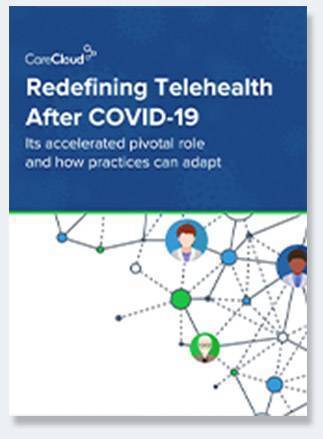In March of 2020, the CDC asked physicians to triage non-essential care in order to reduce the risk of COVID-19 exposure. Fast forward to our post-pandemic landscape, and in order to provide quality care for marginally healthy groups, many physicians have adopted virtual solutions.
Virtual care gives physicians risk-free, reliable ways to offer non-essential care whenever and wherever they need it – a powerful resource, regardless of pandemics.
Beyond COVID and its challenges, twenty-first-century patients are consumer-minded and ready for change. They no longer tolerate postponed appointments and they demand care that is convenient, safe, and easy to access. Keep reading to find out how you can provide non-essential care quickly, safely, and effectively.
Putting every patient “first”
By utilizing technology, providers can ensure every patient feels like the top priority. By creating an engaging, patient-centric environment, providers can cater to the patient-consumer mindset. Telehealth’s one-on-one, face-to-face platform tends to boost patient experience and engagement rates thanks to its ability to shield patient-doctor interactions from in-person distractions.
See more patients
Opening your schedule to non-essential treatment is a quick way to enhance cash flow. Your practice’s overall health is determined by financials, and any and every revenue stream you’re able to secure helps bulk up your receivables. Long gone are the days where you’d have to choose between non-essential treatment and standard care. Now, with the advancement of practice management tools and digital solutions, you can introduce treatment diversity into your schedule.
It’s time to prioritize non-essential care like your practice depends on it – because it does.
Maximize virtual solutions and tools
Making the most out of virtual solutions and tools can be a gamechanger for your practice. Using telehealth, you can conduct remote consultations with your patients to assess their needs, allowing patients to take control of their care regime.
Telehealth has proven to be the ideal solution for practices and providers looking to prioritize non-essential care. The ability to see your patients over seamless video calls for quick routine visits allows you to meet your patients’ needs in an entirely new way. In turn, you’re able to increase patient volume, provide necessary care, and generate billable patient encounters to grow revenues and keep your practice running.
- Has patient volume increased? If so, by how much?
- How many more billable encounters have been created?
- What percentage of patient volume was in-person?
- What percentage of patient volume was virtual?
Review key performance indicators
Evaluating your key performance indicators (KPIs) on a regular basis is vital to any revenue cycle management process. As you advance into and develop this new phase of patient care, KPIs will provide valuable practice insights into your overall progress.
As you look to boost your practice and draw in new patients, you may want to consider reviewing the following key data analytics:
- Has patient volume increased? If so, by how much?
- How many more billable encounters have been created?
- What percentage of patient volume was in-person?
- What percentage of patient volume was virtual?
Reviewing detailed KPIs like these will help you better understand what care methods are most utilized within your practice. By performing a regular analysis of your practice data in this way, you can make more informed decisions moving forward, such as promoting telehealth services practice-wide if a significant percentage of your patients have responded favorably to virtual visits.
Moving forward
COVID-19 sent shock waves through the healthcare sector that will most likely be felt for years to come. With user-experience driven, data-first services such as touchless patient experience and telehealth, practices have countless tools at their fingertips. Practices that utilize the modern, reliable solutions at hand and practices that also emphasize KPI monitoring will be the ones to attract new consumer-minded patients, grow their practice group, and thrive in the modern, post-pandemic standard of care.

Download your free copy of:



